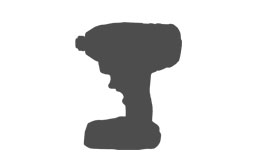Quick Select
Select specific models or manufacturers you want to see
Comparison tables not only compare products they organize product details into a normalized readable format. SpecLook does the hard work for you by finding all of the information from multiple sources, normalizing the values, and organizing all that data into easy to read tables. SpecLook tables allow you to search, sort, and filter, making it easier to find the details that are most important to you.
The comparison table on this page shows all products available for this type. You can use the filters section next to the table to narrow down the listings, OR you can select only the products and/or manufacturers you would like to see by selecting them here and then clicking the Customize Table button.
Most Popular
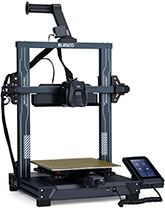
Others
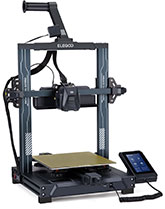
Most Popular
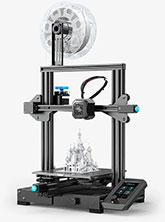
Others
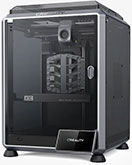
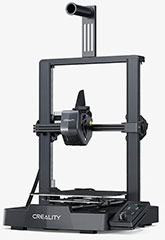
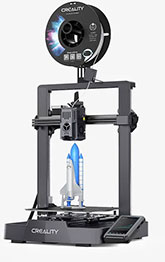
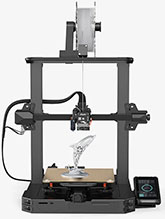
Most Popular
Others
Most Popular
Others
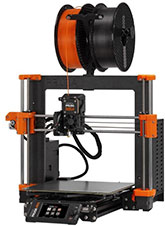
Most Popular
Others
Most Popular
Others
Need help choosing which product fits you best? Click Here
Comparison Awards
Awards are based on the comparison of details and specifications gathered for each product. SpecLook does not favor or promote any specific products or manufactures over any others.
Filters
You can also sort some of the columns by clicking the column titles.
Compare FDM 3D Printers
(Hold Shift while scrolling to scroll horizontally)
| Product | Compare | Image | Category | Manufacturer | Model | Avg. Price | Links | Avg. Rating | Total Rating Count | Ratings | Dimensions (HxWxD) | Weight | Power Type | Battery System | Motor Type | Amps | Battery Type | Voltage | Cord Length | Frame Construction | Max Printhead Speed | Max Acceleration | Extruder Type | Nozzle Max Temp | Default Nozzle Size | Print Accuracy | Min Layer Height | Max Layer Height | Supported Materials | Supported Resins | Bed Leveling | Print Surface | Heated Bed | Bed Max Temp | Build Width | Build Depth | Build Height | Enclosure | Filament Detection | Input Shaping | WiFi | Ethernet | USB | Tech/Electrical | Included | Extra Features | Certifications | Manufacturer Warranty | Price |
|---|---|---|---|---|---|---|---|---|---|---|---|---|---|---|---|---|---|---|---|---|---|---|---|---|---|---|---|---|---|---|---|---|---|---|---|---|---|---|---|---|---|---|---|---|---|---|---|---|---|
| ELEGOO Neptune 4 Max (Neptune 4 Max) | 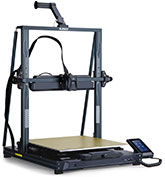 Image provided by: www.elegoo.com Image provided by: www.elegoo.com | FDM - Fused Deposition Modeling | ELEGOO | Neptune 4 Max | 1 | Check Price at Amazon | 4.500 | 160 | ELEGOO4.5 / 5.0 (160) | 40.124 | Corded | 0.000 | i3-Style - Cartesian XZ-Head Y-Bed | 500 | 8,000 | Direct | 300 | 0.40 | ±0.1mm | ABS Nylon/PA PETG PLA TPU | Auto | PEI Magnetic Platform | Yes | 85 | 420 | 420 | 480 | No | Yes | Yes | Yes | Yes | Yes | Kilpper High-Speed Motherboard, Quad-Core ARM 64-bit 1.5G | Extended Hot End +60W Ceramic Heating Element + Brass Heating Block, Pressure Advance, All-Titanium Alloy Throat Pipe, Auxiliary & 121-Point Auto Leveling, Removable Capacitive Touchscreen, LED Light Bar, Nozzle LED Light, Filament Holder | Check Price at Amazon | |||||||||||||
| ELEGOO Neptune 4 Pro (Neptune 4 Pro) |  Image provided by: www.elegoo.com Image provided by: www.elegoo.com | FDM - Fused Deposition Modeling | ELEGOO | Neptune 4 Pro | 1 | Check Price at Amazon | 4.900 | 224 | ELEGOO4.9 / 5.0 (224) | 19.621 | Corded | 0.000 | i3-Style - Cartesian XZ-Head Y-Bed | 500 | 8,000 | Direct | 300 | 0.40 | ±0.1mm | 0.100 | 0.300 | ABS Nylon/PA PETG PLA TPU | Auto | PEI Magnetic Platform | Yes | 110 | 225 | 225 | 265 | No | Yes | Yes | No | Yes | Yes | Kilpper Motherboard, Quad-Core ARM 64-bit 1.5G | Extended Hot End, Pressure Advance, Copper-Titanium Bi-Metal Throat Pipe, Auxiliary & 121-Point Auto Leveling, Removable Capacitive Touchscreen, LED Light Bar, Nozzle LED Light, Filament Holder | Check Price at Amazon | |||||||||||
| ELEGOO Neptune 4 (Neptune 4) |  Image provided by: www.elegoo.com Image provided by: www.elegoo.com | FDM - Fused Deposition Modeling | ELEGOO | Neptune 4 | 1 | Check Price at Amazon | 4.900 | 79 | ELEGOO4.9 / 5.0 (79) | 18.298 | Corded | 0.000 | i3-Style - Cartesian XZ-Head Y-Bed | 500 | 20,000 | Direct | 300 | 0.40 | ABS Nylon/PA PETG PLA TPU | Auto | PEI Magnetic Platform | Yes | 110 | 225 | 225 | 265 | No | Yes | Yes | No | Yes | Yes | Kilpper Motherboard, Quad-Core ARM 64-bit 1.5G | Pressure Advance, Copper-Titanium Bi-Metal Throat Pipe, Auxiliary & 121-Point Auto Leveling, Removable Capacitive Touchscreen, LED Light Bar, Nozzle LED Light, Filament Holder | Check Price at Amazon | ||||||||||||||
| ELEGOO Neptune 4 Plus (Neptune 4 Plus) | 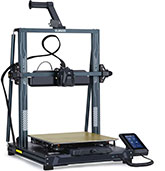 Image provided by: www.elegoo.com Image provided by: www.elegoo.com | FDM - Fused Deposition Modeling | ELEGOO | Neptune 4 Plus | 1 | Check Price at Amazon | 4.800 | 114 | ELEGOO4.8 / 5.0 (114) | 31.747 | Corded | 0.000 | i3-Style - Cartesian XZ-Head Y-Bed | 500 | 12,000 | Direct | 300 | 0.40 | ±0.1mm | ABS Nylon/PA PETG PLA TPU | Auto | PEI Magnetic Platform | Yes | 100 | 320 | 320 | 385 | No | Yes | Yes | Yes | Yes | Yes | Kilpper Motherboard, Quad-Core ARM 64-bit 1.5G | Extended Hot End +60W Ceramic Heating Element + Brass Heating Block, Pressure Advance, All-Titanium Alloy Throat Pipe, Auxiliary & 121-Point Auto Leveling, Removable Capacitive Touchscreen, LED Light Bar, Nozzle LED Light, Filament Holder | Check Price at Amazon | |||||||||||||
| Creality K1 Speedy 3D Printer (K1 Speedy) | 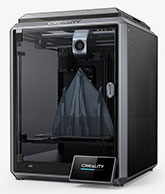 Image provided by: www.creality.com Image provided by: www.creality.com | FDM - Fused Deposition Modeling | Creality | K1 Speedy | 1 | Check Price at Amazon | 4.270 | 134 | BH Photo Video3.3 / 5.0 (16) Creality4.4 / 5.0 (118) | 27.558 | Corded | 0.000 | CoreXY - Cartesian XY-Head Z-Bed | 600 | 20,000 | Direct | 300 | 0.40 | 100±0.1mm | 0.100 | 0.350 | ABS ASA Nylon/PA PA-CF PC PET PET-CF PETG PLA PLA-CF TPU | Auto | Flexible build plate | Yes | 100 | 220 | 220 | 250 | Yes | Yes | Yes | Yes | No | Yes | Creality OS, Dual-Core 1.2GHz CPU, 350W Rated Power | Unibody Die-cast Aluminum Frame, Ceramic Heater, 4.3" Color Touch Screen, Lighting Kit, Sleep Mode,Power Loss Recovery, Remote Monitoring, Optional AI Camera, Optional AI LiDAR | Check Price at Amazon | |||||||||||
| Creality K1 Max AI Fast 3D Printer (K1 Max) | 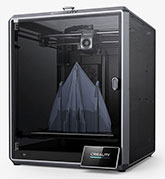 Image provided by: www.creality.com Image provided by: www.creality.com | FDM - Fused Deposition Modeling | Creality | K1 Max | 2 | Check Price at Amazon | 4.460 | 203 | Best Buy4.3 / 5.0 (70) BH Photo Video5 / 5.0 (10) Creality4.5 / 5.0 (123) | 39.683 | Corded | 0.000 | CoreXY - Cartesian XY-Head Z-Bed | 600 | 20,000 | Direct | 300 | 0.40 | 100±0.1mm | 0.100 | 0.350 | ABS ASA Nylon/PA PA-CF PC PET PET-CF PETG PLA PLA-CF TPU | Auto | Flexible Build Plate | Yes | 100 | 300 | 300 | 300 | Yes | Yes | Yes | Yes | Yes | Yes | Creality OS, Dual-Core 1.2GHz CPU, 1000W Rated Power | Unibody Die-cast Aluminum Frame, Ceramic Heater, 4.3" Color Touch Screen, Lighting Kit, Sleep Mode, Power Loss Recovery, Real Time Monitoring with Smart Notifications, AI Camera, AI LiDAR with 1μm Resolution, Foreign Object Detection, Failure Detection, Motion Advance, Built-In Air Purifier | Check Price at Amazon | |||||||||||
| Creality K1 (Flagship) (K1) | 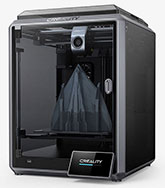 Image provided by: www.creality.com Image provided by: www.creality.com | FDM - Fused Deposition Modeling | Creality | K1 | 1 | Check Price at Amazon | 4.340 | 260 | Best Buy4.4 / 5.0 (34) Creality3.8 / 5.0 (25) MicroCenter4.4 / 5.0 (201) | 27.558 | Corded | 0.000 | CoreXY - Cartesian XY-Head Z-Bed | 600 | 20,000 | Direct | 300 | 0.40 | 100±0.1mm | 0.100 | 0.350 | ABS ASA Nylon/PA PA-CF PC PET PET-CF PETG PLA PLA-CF TPU | Auto | Flexible Build Plate | Yes | 100 | 220 | 220 | 250 | Yes | Yes | Yes | Yes | No | Yes | Creality OS, 350W Rated Power | Unibody Die-cast Frame, Ceramic Heater, 4.3" Color Touch Screen, Lighting Kit, Sleep Mode,Power Loss Recovery, Real Time Monitoring with Smart Notifications, Optional AI Camera, Optional AI LiDAR | Check Price at Amazon | |||||||||||
| Creality Sermoon D3 3D Printer (Sermoon D3) | 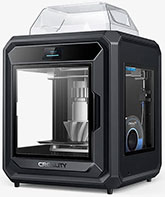 Image provided by: www.creality.com Image provided by: www.creality.com | FDM - Fused Deposition Modeling | Creality | Sermoon D3 | 5 | Check Price at Amazon | 4.700 | 11 | Creality4.7 / 5.0 (11) | 99.208 | Corded | 0.000 | CoreXY - Cartesian XY-Head Z-Bed | 250 | 0 | Direct | 300 | 0.40 | ±0.1mm | 0.100 | 0.400 | ABS ASA PA66 PA66-CF PC PC-ABS PET-CF PETG PLA PLA-CF PLA-Wood TPC TPU95A | Auto | PEI Spring Steel Print Sheets | Yes | 110 | 250 | 300 | 300 | Yes | Yes | Yes | Yes | Yes | Integrated 32-bit Silent Mainboard, 500W Rated Power | Industrial Grade Stability, Axis Assisted with Stainless Steel Linear Shafts of 60HRC Hardness, Bimetal Heat Break (Copper Alloy+Titanium Alloy), 4.3" Touch Screen, Power Loss Recovery, Air Filtration, Built-in 1080P HD Camera | Check Price at Amazon | ||||||||||||
| Creality Ender-3 V3 SE 3D Printer (Ender-3 V3 SE) |  Image provided by: www.creality.com Image provided by: www.creality.com | FDM - Fused Deposition Modeling | Creality | Ender-3 V3 SE | 1 | Check Price at Amazon | 4.480 | 97 | Best Buy4.6 / 5.0 (56) BH Photo Video5 / 5.0 (6) Creality4.2 / 5.0 (35) | 16.182 | Corded | 0.000 | i3-Style - Cartesian XZ-Head Y-Bed | 250 | 2,500 | Direct | 260 | 0.40 | ±0.1mm | 0.100 | 0.350 | PETG PLA TPU95A | Auto | PC Spring Steel | Yes | 100 | 220 | 220 | 250 | No | No | No | No | No | Yes - No Printing Support | 32-bit Silent Mainboard, 350W Rated Power | Auto Filament Loading, SD Card Slot, 3.2" Color Knob Screen, Power Loss Recovery | Check Price at Amazon | |||||||||||
| Creality Ender-3 S1 Pro 3D Printer (Ender-3 S1 Pro) |  Image provided by: www.creality.com Image provided by: www.creality.com | FDM - Fused Deposition Modeling | Creality | Ender-3 S1 Pro | 1 | Check Price at Amazon | 4.410 | 167 | BH Photo Video5 / 5.0 (9) Creality4.3 / 5.0 (43) MicroCenter4.4 / 5.0 (115) | 19.180 | Corded | 0.000 | i3-Style - Cartesian XZ-Head Y-Bed | 150 | 0 | Direct | 300 | 0.40 | ±0.1mm | 0.100 | 0.350 | PA66 PETG PLA TPU | Auto | PEI Spring Steel | Yes | 110 | 220 | 220 | 270 | Optional | Yes | No | No | No | Yes | 32-bit Silent Mainboard, 350W Rated Power | 4.3" Color Touch Screen, SD Card Slot, LED Light Bar, Optional Sonic Pad | Check Price at Amazon | |||||||||||
| Creality Ender-3 S1 3D Printer (Ender-3 S1) | 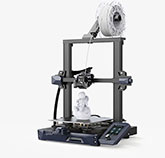 Image provided by: www.creality.com Image provided by: www.creality.com | FDM - Fused Deposition Modeling | Creality | Ender-3 S1 | 1 | Check Price at Amazon | 4.590 | 439 | Creality4.5 / 5.0 (30) MicroCenter4.6 / 5.0 (409) | 20.062 | Corded | 0.000 | i3-Style - Cartesian XZ-Head Y-Bed | 160 | 1,500 | Direct | 260 | 0.40 | ±0.1mm | 0.100 | 0.350 | ABS PETG PLA TPU | Auto | PEI Spring Steel Magnetic | Yes | 100 | 220 | 220 | 270 | Optional | Yes | No | No | No | Yes | 32-bit Silent Mainboard, 350W Rated Power | 4.3" LCD Knob Screen, SD Card Slot, LED Light Bar, Resume Printing, Optional Sonic Pad | Check Price at Amazon | |||||||||||
| Creality Ender-3 S1 Plus 3D Printer (Ender-3 S1 Plus) | 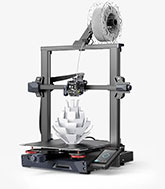 Image provided by: www.creality.com Image provided by: www.creality.com | FDM - Fused Deposition Modeling | Creality | Ender-3 S1 Plus | 1 | Check Price at Amazon | 4.900 | 15 | Creality4.9 / 5.0 (15) | 22.597 | Corded | 0.000 | i3-Style - Cartesian XZ-Head Y-Bed | 160 | 1,500 | Direct | 260 | 0.40 | 100±0.1mm | 0.100 | 0.350 | ABS PETG PLA TPU | Auto | Spring Steel PC Magnetic | Yes | 100 | 300 | 300 | 300 | Optional | Yes | No | No | No | Yes | 32-bit Silent Mainboard, 350W Rated Power | 4.3" Color Touch Screen, SD Card Slot, Optional Sonic Pad | Check Price at Amazon | |||||||||||
| Creality Ender-3 Max Neo 3D Printer (Ender-3 Max Neo) | 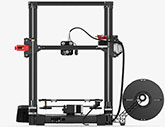 Image provided by: www.creality.com Image provided by: www.creality.com | FDM - Fused Deposition Modeling | Creality | Ender-3 Max Neo | 1 | Check Price at Amazon | 3.900 | 37 | Creality4 / 5.0 (19) MicroCenter3.8 / 5.0 (18) | 22.708 | Corded | 0.000 | i3-Style - Cartesian XZ-Head Y-Bed | 120 | 0 | Bowden | 260 | 0.40 | ±0.1mm | 0.050 | 0.350 | ABS PETG PLA Wood | Auto | Carborundum Glass | Yes | 100 | 300 | 300 | 320 | No | Yes | No | No | No | Yes | 32-bit Silent Mainboard, 350W Rated Power | 4.3" Knob Screen, SD Card Slot, Resume Printing | Check Price at Amazon | |||||||||||
| Creality Ender-3 3D Printer (Ender-3) | 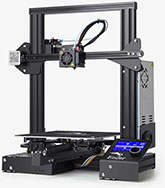 Image provided by: www.creality.com Image provided by: www.creality.com | FDM - Fused Deposition Modeling | Creality | Ender-3 | 1 | Check Price at Amazon | 4.300 | 23 | Creality4.3 / 5.0 (23) | 14.771 | Corded | 0.000 | i3-Style - Cartesian XZ-Head Y-Bed | 100 | 0 | Direct | 255 | 0.40 | ±0.1mm | 0.100 | 0.400 | ABS PLA TPU | Auto | Magnetic Build Plate | Yes | 110 | 220 | 220 | 250 | Optional | No | No | No | No | Yes | SD Card Slot, Spool Holder | Check Price at Amazon | ||||||||||||
| Creality Ender-3 V2 3D Printer (Ender-3 V2) |  Image provided by: www.creality.com Image provided by: www.creality.com | FDM - Fused Deposition Modeling | Creality | Ender-3 V2 | 1 | Check Price at Amazon | 4.490 | 749 | Creality4.1 / 5.0 (15) MicroCenter4.5 / 5.0 (734) | 17.196 | Corded | 0.000 | i3-Style - Cartesian XZ-Head Y-Bed | 180 | 0 | Bowden | 260 | 0.40 | ±0.1mm | 0.100 | 0.400 | PETG PLA TPU | Manual | Carborundum Glass | Yes | 100 | 220 | 220 | 250 | No | No | No | No | No | No | Silent Mainboard, 350W Rated Power | 4.3" Knob Screen, SD Card Slot, Resume Printing | Check Price at Amazon | |||||||||||
| Creality Ender-3 Neo 3D Printer (Ender-3 Neo) | 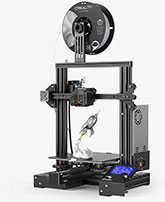 Image provided by: www.creality.com Image provided by: www.creality.com | FDM - Fused Deposition Modeling | Creality | Ender-3 Neo | 1 | Check Price at Amazon | 4.000 | 14 | Creality4 / 5.0 (14) | 15.432 | Corded | 0.000 | i3-Style - Cartesian XZ-Head Y-Bed | 120 | 0 | Bowden | 260 | 0.40 | ±0.1mm | 0.050 | 0.350 | ABS PETG PLA | Auto | Carborundum Glass | Yes | 100 | 220 | 220 | 250 | No | No | No | No | No | Yes | 32-bit Silent Mainboard, 350W Rated Power | 12864 Mono Knob Screen, SD Card Slot, Resume Printing | Check Price at Amazon | |||||||||||
| Creality Ender-3 V3 KE 3D Printer (Ender-3 V3 KE) |  Image provided by: www.creality.com Image provided by: www.creality.com | FDM - Fused Deposition Modeling | Creality | Ender-3 V3 KE | 1 | Check Price at Amazon | 4.150 | 53 | BH Photo Video5 / 5.0 (3) Creality4.1 / 5.0 (50) | 17.196 | Corded | 0.000 | i3-Style - Cartesian XZ-Head Y-Bed | 500 | 8,000 | Direct | 300 | 0.40 | ±0.1mm | 0.100 | 0.350 | ABS ASA PETG PLA TPU95A | Auto | PEI flexible build plate | Yes | 100 | 220 | 220 | 240 | No | Yes | Yes | Yes | No | Yes | Creality OS, 32-bit Silent Mainboard, 350W Rated Power | 4.3" Color Touch Screen, Ceramic Heater, Bimetal Heat Break (Copper Alloy+Titanium Alloy), Optional AI Camera, Optional Vibration Compensation Sensor, Power Loss Recovery | Check Price at Amazon | |||||||||||
| Creality Ender-5 S1 3D Printer (Ender-5 S1) | 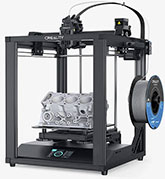 Image provided by: www.creality.com Image provided by: www.creality.com | FDM - Fused Deposition Modeling | Creality | Ender-5 S1 | 1 | Check Price at Amazon | 3.980 | 90 | BH Photo Video4.5 / 5.0 (7) Creality3.7 / 5.0 (44) MicroCenter4.2 / 5.0 (39) | 26.676 | Corded | 0.000 | CoreXY - Cartesian XY-Head Z-Bed | 250 | 2,000 | Direct | 300 | 0.40 | ±0.1mm | 0.100 | 0.350 | ABS ASA HIPS PC PETG PLA TPU | Auto | PC Spring Steel Sheet | Yes | 110 | 220 | 220 | 280 | No | Yes | No | Optional | No | Yes | 32-bit Silent Mainboard, 350W Rated Power | 4.3" Color Touch Screen, SD Card Slot, Titanium Alloy Heatbreak, Resume Printing | Check Price at Amazon | |||||||||||
| Creality Ender-5 Plus 3D Printer (Ender-5 Plus) | 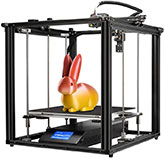 Image provided by: www.creality.com Image provided by: www.creality.com | FDM - Fused Deposition Modeling | Creality | Ender-5 Plus | 1 | Check Price at Amazon | 4.120 | 112 | Creality3.7 / 5.0 (19) MicroCenter4.2 / 5.0 (93) | 40.124 | Corded | 0.000 | CoreXY - Cartesian XY-Head Z-Bed | 60 | 0 | Bowden | 260 | 0.40 | ±0.1mm | 0.100 | 0.400 | ABS PLA TPU Wood | Auto | Glass | Yes | 100 | 350 | 350 | 400 | No | Yes | No | No | No | Yes | 550W Rated Power | 4.3" Color Touch Screen, SD Card Slot, Resume Printing | Check Price at Amazon | |||||||||||
| Anycubic Kobra 2 (Kobra 2) | 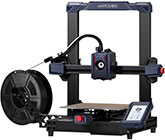 Image provided by: www.anycubic.com Image provided by: www.anycubic.com | FDM - Fused Deposition Modeling | Anycubic | Kobra 2 | 1 | Check Price at Amazon | 4.790 | 70 | Anycubic4.8 / 5.0 (65) MicroCenter4.6 / 5.0 (5) | 18.519 | Corded | 0.000 | i3-Style - Cartesian XZ-Head Y-Bed | 300 | 3,000 | Direct | 260 | 0.40 | X/Y/Z 0.0125mm/0.0125mm/0.0025mm (Positioning) | 0.050 | 0.300 | ABS PETG PLA TPU | Auto | Magnetic Spring Steel Build Plate | Yes | 110 | 220 | 220 | 250 | No | Yes | No | No | Yes | 400W Rated Power | LeviQ 2.0 Auto-leveling, Smart Z-Offset, Easy Modular Assembly, MicroSD Card Slot, 4.3" Colored LCD Touchscreen, Power-Loss Recovery, Double Z-Axis Threaded Rods | Check Price at Amazon | ||||||||||||
| Anycubic Kobra 2 Plus (Kobra 2 Plus) | 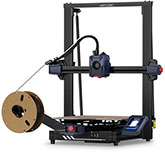 Image provided by: www.anycubic.com Image provided by: www.anycubic.com | FDM - Fused Deposition Modeling | Anycubic | Kobra 2 Plus | 1 | Check Price at Amazon | 4.630 | 60 | Anycubic4.7 / 5.0 (53) MicroCenter4.1 / 5.0 (7) | 28.660 | Corded | 0.000 | i3-Style - Cartesian XZ-Head Y-Bed | 500 | 10,000 | Direct | 260 | 0.40 | X/Y/Z 0.0125mm/0.0125mm/0.0025mm (Positioning) | 0.050 | 0.300 | ABS PETG PLA TPU | Auto | PEI Magnetic Spring Steel | Yes | 90 | 320 | 320 | 400 | No | Yes | Yes | No | No | Yes | 32-bit Silent Motherboard, Cortex-A7 1.2 GHz Processor, 400W Power Supply | LeviQ 2.0 Auto-leveling, Smart Z-Offset, 4.3" Colored LCD Touchscreen, Double Z-Axis Threaded Rods, Flow Control, Anycubic APP Control & Monitoring, X/Y Axis Belt Tensioner | Check Price at Amazon | |||||||||||
| Anycubic Kobra 2 Max (Kobra 2 Max) | 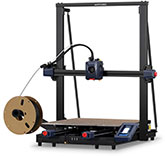 Image provided by: www.anycubic.com Image provided by: www.anycubic.com | FDM - Fused Deposition Modeling | Anycubic | Kobra 2 Max | 1 | Check Price at Amazon | 4.620 | 197 | Anycubic4.7 / 5.0 (179) MicroCenter3.8 / 5.0 (18) | 46.297 | Corded | 0.000 | i3-Style - Cartesian XZ-Head Y-Bed | 500 | 10,000 | Direct | 260 | 0.40 | X/Y/Z 0.0125mm/0.0125mm/0.0025mm (Positioning) | 0.050 | 0.300 | ABS PETG PLA TPU | Auto | PEI Magnetic Spring Steel | Yes | 90 | 420 | 420 | 500 | No | Yes | Yes | No | No | Yes | 32-bit Silent Motherboard, Cortex-A7 1.2 GHz Processor, 500W Power Supply | LeviQ 2.0 Auto-leveling, Smart Z-Offset, 4.3" Colored LCD Touchscreen, Double Z-Axis Threaded Rods, Flow Control, Anycubic APP Control & Monitoring, X/Y Axis Belt Tensioner | Check Price at Amazon | |||||||||||
| Anycubic Kobra 2 Pro (Kobra 2 Pro) |  Image provided by: www.anycubic.com Image provided by: www.anycubic.com | FDM - Fused Deposition Modeling | Anycubic | Kobra 2 Pro | 1 | Check Price at Amazon | 4.770 | 125 | Anycubic4.8 / 5.0 (119) MicroCenter4.2 / 5.0 (6) | 18.519 | Corded | 0.000 | i3-Style - Cartesian XZ-Head Y-Bed | 500 | 20,000 | Direct | 260 | 0.40 | X/Y/Z 0.0125mm/0.0125mm/0.0025mm (Positioning) | 0.050 | 0.300 | ABS PETG PLA TPU | Auto | PEI Magnetic Spring Steel | Yes | 110 | 220 | 220 | 250 | No | Yes | Yes | No | No | Yes | 32-bit Silent Motherboard, Cortex-A7 1.2 GHz Processor, 400W Power Supply | LeviQ 2.0 Auto-leveling, Smart Z-Offset, 4.3" Colored LCD Touchscreen, Double Z-Axis Threaded Rods, Flow Control, Anycubic APP Control & Monitoring, X/Y Axis Belt Tensioner | Check Price at Amazon | |||||||||||
| Anycubic Kobra 2 Neo (Kobra 2 Neo) | 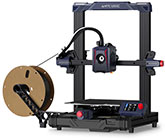 Image provided by: www.anycubic.com Image provided by: www.anycubic.com | FDM - Fused Deposition Modeling | Anycubic | Kobra 2 Neo | 1 | Check Price at Amazon | 4.800 | 52 | Anycubic4.8 / 5.0 (52) | 16.094 | Corded | 0.000 | i3-Style - Cartesian XZ-Head Y-Bed | 250 | 2,500 | Direct | 260 | 0.40 | X/Y/Z 0.0125mm/0.0125mm/0.0025mm (Positioning) | 0.050 | 0.300 | ABS PETG PLA TPU | Auto | PEl Magnetic Spring Steel | Yes | 110 | 220 | 220 | 250 | No | Optional | Yes | No | No | No | 400W Rated Power | MicroSD Card Slot, LeviQ 2.0 Auto-leveling, Smart Z-Offset, 2.4" Knob Control LCD, Single Z-Axis Threaded Rod | Check Price at Amazon | |||||||||||
| Anycubic Kobra Max (Kobra Max) | 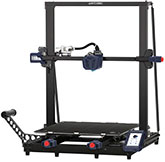 Image provided by: www.anycubic.com Image provided by: www.anycubic.com | FDM - Fused Deposition Modeling | Anycubic | Kobra Max | 1 | Check Price at Amazon | 4.700 | 61 | Anycubic4.7 / 5.0 (61) | 35.274 | Corded | 0.000 | i3-Style - Cartesian XZ-Head Y-Bed | 180 | 0 | Bowden | 260 | 0.40 | ±0.1mm | 0.050 | 0.300 | ABS HIPS PETG PLA TPU Wood | Auto | Carborundum Glass | Yes | 90 | 400 | 400 | 450 | No | Yes | No | No | No | No | 500W Rated Power | 4.3" Colored LCD Touchscreen, MicroSD Card Slot, LeviQ 2.0 Auto-leveling, Double Z-Axis Threaded Rods, X/Y Axis Belt Tensioner | Check Price at Amazon | |||||||||||
| Anycubic Kobra Plus (Kobra Plus) | 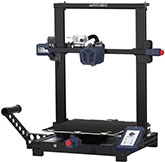 Image provided by: www.anycubic.com Image provided by: www.anycubic.com | FDM - Fused Deposition Modeling | Anycubic | Kobra Plus | 1 | Check Price at Amazon | 4.900 | 21 | Anycubic4.9 / 5.0 (21) | 24.251 | Corded | 0.000 | i3-Style - Cartesian XZ-Head Y-Bed | 180 | 0 | Bowden | 260 | 0.40 | X/Y/Z 0.0125mm/0.0125mm/0.0025mm (Positioning) | 0.050 | 0.300 | ABS HIPS PETG PLA TPU Wood | Auto | Carborundum Glass | Yes | 100 | 300 | 300 | 350 | No | Yes | No | No | No | No | 350W Rated Power | 4.3" LCD Touchscreen, MicroSD Card Slot, LeviQ 2.0 Auto-leveling, Double Z-Axis Threaded Rods, X/Y Axis Belt Tensioner, Power-Loss Recovery, Integrated Tool Drawer | Check Price at Amazon | |||||||||||
| Prusa MK4 (MK4) |  Image provided by: www.prusa3d.com Image provided by: www.prusa3d.com | FDM - Fused Deposition Modeling | Prusa | MK4 | 3 | Check Manufacturer Listing | 4.470 | 95 | PrintedSolid4.8 / 5.0 (25) Prusa4.36 / 5.0 (70) | 16.755 | Corded | 0.000 | i3-Style - Cartesian XZ-Head Y-Bed | 0 | 0 | Direct | 300 | 0.40 | 0.050 | 0.300 | ASA CPE Flex Nylon/PA PC PETG PLA PP PVA PVB nGen | Auto | PEI Magnetic Spring Steel Print Sheets | Yes | 120 | 250 | 210 | 220 | Optional | Yes | No | Yes | Yes | Yes | Custom 32-bit xBuddy electronics with STM32, 240W PSU | Loadcell Sensor, Nextruder with Breakout Board, Remote Printing, Customizable UI, Color LCD Screen, Quick-Swap Nozzles | Check Manufacturer Listing | ||||||||||||
| Prusa i3 MK3S+ (i3 MK3S+) | 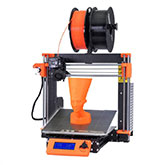 Image provided by: www.prusa3d.com Image provided by: www.prusa3d.com | FDM - Fused Deposition Modeling | Prusa | i3 MK3S+ | 4 | Check Price at Amazon | 4.550 | 115 | PrintedSolid4.9 / 5.0 (41) Prusa4.35 / 5.0 (74) | 15.432 | Corded | 0.000 | i3-Style - Cartesian XZ-Head Y-Bed | 200 | 0 | Direct | 300 | 0.40 | 0.050 | 0.350 | ABS ASA CPE Carbon Filled Flex HIPS Nylon/PA PC PETG PLA PP PVA PVB Wood nGen | Auto | PEI Spring Steel Print Sheets | Yes | 120 | 250 | 210 | 210 | No | Yes | No | No | Yes | Custom Delta PSU with Hardware-Based Power Panic | SuperPinda Probe, Mesh Bed Leveling, Power Loss Recovery (Power Panic), SD Card Slot, LCD Panel, E3D V6 Hotend | Check Price at Amazon | |||||||||||||
| Prusa MINI+ (MINI+) | 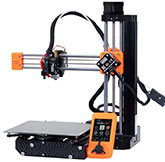 Image provided by: www.prusa3d.com Image provided by: www.prusa3d.com | FDM - Fused Deposition Modeling | Prusa | MINI+ | 2 | Check Manufacturer Listing | 4.370 | 73 | PrintedSolid4.9 / 5.0 (18) Prusa4.2 / 5.0 (55) | 10.692 | Corded | 0.000 | i3-Style - Cartesian XZ-Head Y-Bed | 200 | 0 | Bowden | 280 | 0.40 | 0.050 | 0.250 | ABS ASA CPE Flex HIPS Nylon/PA PC PETG PLA PP PVA PVB Wood nGen | Auto | Magnetic Spring Steel Print Sheets | Yes | 100 | 180 | 180 | 180 | No | Optional | Optional | Yes | Yes | Custom 32-bit xBuddy electronics with STM32 | SuperPinda Probe, Spool Holder, LCD Panel | Check Manufacturer Listing | |||||||||||||
| MakerBot Sketch 3D printer (Sketch Standard) | 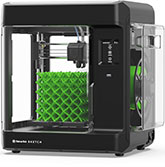 Image provided by: www.makerbot.com Image provided by: www.makerbot.com | FDM - Fused Deposition Modeling | MakerBot | Sketch Standard | 3 | Check Price at Amazon | 3.000 | 4 | Best Buy3 / 5.0 (4) | 26.015 | Corded | 0.000 | CoreXY - Cartesian XY-Head Z-Bed | 100 | 0 | Direct | 0 | 0.40 | 0.100 | 0.400 | MakerBot Tough PLA | Auto | Removable Flexible Grip Surface | Yes | 100 | 150 | 150 | 150 | Yes | Yes | No | Yes | Yes | Yes | Particulate Filter, On-Board 2 Megapixel Camera, 2.8" Color Touch Screen, Cloud-Based Software, Replaceable Extruder | Check Price at Amazon | |||||||||||||
| MakerBot Sketch Large 3D printer (Sketch Large) | 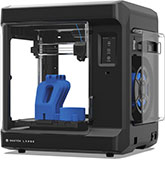 Image provided by: www.makerbot.com Image provided by: www.makerbot.com | FDM - Fused Deposition Modeling | MakerBot | Sketch Large | 5 | Check Price at Amazon | 0.000 | 0 | 51.147 | Corded | 0.000 | CoreXY - Cartesian XY-Head Z-Bed | 150 | 0 | Direct | 0 | 0.40 | 0.100 | 0.400 | MakerBot Tough PLA | Auto | Removable Flexible Grip Surface | Yes | 110 | 220 | 200 | 250 | Yes | Yes | No | Yes | Yes | Yes | Particulate Filter, On-Board 2 Megapixel Camera, 2.8" Color Touch Screen, Cloud-Based Software, Replaceable Extruder | Check Price at Amazon | ||||||||||||||
| MakerBot REPLICATOR+ (Replicator+, MP07825) | 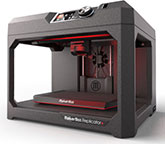 Image provided by: www.makerbot.com Image provided by: www.makerbot.com | FDM - Fused Deposition Modeling | MakerBot | Replicator+ | 0 | Check Price at Amazon | 0.000 | 0 | 40.345 | Corded | 0.000 | CoreXY - Cartesian XY-Head Z-Bed | 0 | 0 | Direct | 255 | 0.40 | 0.100 | 0.300 | MakerBot Tough PLA Wood | Manual | Polycarbonate Film | No | 0 | 295 | 195 | 165 | No | Yes | No | Yes | Yes | Yes | 100W Rated Power | On-Board Camera, MakerBot Mobile App Compatible | Check Price at Amazon | |||||||||||||
| Dremel DigiLab 3D45 (DigiLab 3D45, 3D45-01) | 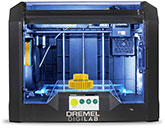 Image provided by: www.3pitech.com Image provided by: www.3pitech.com | FDM - Fused Deposition Modeling | Dremel | DigiLab 3D45 | 5 | Check Price at Amazon | 4.430 | 496 | BH Photo Video5 / 5.0 (22) Dremel4.4 / 5.0 (474) | 36.300 | Corded | 0.000 | CoreXY - Cartesian XY-Head Z-Bed | 0 | 0 | Direct | 280 | 0.40 | +-0.05mm | 0.050 | 0.340 | ABS ECO-ABS Nylon/PA PETG PLA | Semi-Auto | Removeable Glass | Yes | 100 | 255 | 155 | 170 | Yes | Yes | No | Yes | Yes | Yes | Dual 1GHz Processors | On-Board Camera, 4.5" Color Touch Screen, Cloud-Based Software, Air Filter, RFID Filament Tagging | Check Price at Amazon | |||||||||||
| Dremel DigiLab 3D40-FLX (DigiLab 3D40-FLX, 3D40-FLX-01) | 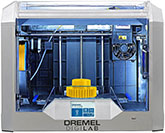 Image provided by: www.3pitech.com Image provided by: www.3pitech.com | FDM - Fused Deposition Modeling | Dremel | DigiLab 3D40-FLX | 4 | Check Price at Amazon | 4.700 | 116 | BH Photo Video5 / 5.0 (1) Dremel4.7 / 5.0 (115) | 35.000 | Corded | 0.000 | CoreXY - Cartesian XY-Head Z-Bed | 0 | 0 | Direct | 230 | 0.40 | 0.050 | 0.340 | PLA | Semi-Auto | Flexible Build Plate | Yes | 0 | 255 | 155 | 170 | Yes | Yes | No | Yes | Yes | Yes | 1GHz Processors | 3.5" Color Touch Screen, Cloud-Based Software | Check Price at Amazon | ||||||||||||
| Creality K1C 3D Printer (K1C) |  Image provided by: www.creality.com Image provided by: www.creality.com | FDM - Fused Deposition Modeling | Creality | K1C | 2 | Check Price at Amazon | 4.180 | 29 | Best Buy5 / 5.0 (5) Creality4.2 / 5.0 (15) MicroCenter3.7 / 5.0 (9) | 19 in x 14 in x 14 in(48.26 cm x 35.56 cm x 35.56 cm) | 35.300 | Corded | 0.000 | 120 | CoreXY - Cartesian XY-Head Z-Bed | 600 | 20,000 | Direct | 300 | 0.40 | 100±0.1mm | 0.100 | 0.350 | ABS ASA Nylon/PA PA-CF PC PET PET-CF PETG PLA PLA-CF TPU | Auto | PEI Flexible Build Plate | Yes | 100 | 220 | 220 | 250 | Yes | Yes | Yes | Yes | No | Yes | Creality OS | 4.3" Color Touch Screen, Observant Al Camera, Supports Carbon Fiber Filled Filaments, Quick-Swap Tri-Metal Nozzle, Active Carbon Filter, Silent Mode, Partial Failure Exclusion, Clog-free Direct Drive Extruder, Power Loss Recovery | 1 Year Limited | Check Price at Amazon | ||||||||
| Category | Manufacturer | Model | Avg. Price | Avg. Rating | Total Rating Count | Weight | Power Type | Battery System | Motor Type | Amps | Battery Type | Voltage | Frame Construction | Max Printhead Speed | Max Acceleration | Extruder Type | Nozzle Max Temp | Default Nozzle Size | Min Layer Height | Max Layer Height | Bed Leveling | Heated Bed | Bed Max Temp | Build Width | Build Depth | Build Height | Enclosure | Filament Detection | Input Shaping | WiFi | Ethernet | USB |
* SpecLook.com is a participant in the Amazon Services LLC Associates Program and may earn commissions from qualifying purchases made through the available links, at no additional cost to you. SpecLook has not been given any free products, services, compensation, or anything else by companies in exchange for mentioning them on this site. The content displayed in SpecLook comparison tables is for educational use and intended to inform users about the precise details and/or specifications of any given product in relation to other similar products. SpecLook attempts to continually update product details to maintain the most accurate and up to date values available. Product details may not be fully inclusive of all details available. Some values may be dependent on specific battery or power source capabilities.
SpecLook does not favor or promote any specific products, manufacturers, or distributors over the others. All highlights and awards are purely based on the comparison of details and specifications gathered for the products mentioned in the above table. All details and specifications in the above table are gathered directly from, but not limited to, manufacturer websites, manufacturer released distribution materials and product manuals. All rating data is updated as frequently as possible to reflect the most up to date and accurate values.
How to Choose the Best FDM 3D Printer
Factors to Compare with FDM 3D Printers
- Print Resolution and Quality: When seeking the best FDM 3D printer, pay close attention to print resolution (or layer heights). It determines the level of detail your prints can achieve. High-resolution printers excel in creating intricate and smooth surfaces, making them suitable for a variety of applications. The typical resolutions FDM printers can achieve are layer heights between 0.1mm and 0.3mm.
- Build Volume: The size of the build volume defines the maximum size of objects you can print. For larger projects, a printer with a generous build volume is essential. For hobbyists or smaller jobs, a 3D printer with a smaller build area may be a great option to save some money.
- Printing Speed: Printing speed varies among FDM 3D printers. While faster printing is advantageous, it’s crucial to consider the impact on print quality. The best printers strike a balance, providing reasonable speed without compromising the integrity of the print. The table above details the max possible print speeds, though the manufacturer recommended speeds are often much slower.
- Material Compatibility: The range of materials a printer can handle is a critical factor. The best FDM 3D printers are often compatible with a variety of filaments, including PLA, ABS, PETG, PA (Nylon), and more. This versatility enables users to explore different materials based on the requirements of their projects. Often times printers can handle many more filaments than what are explicitly stated by the manufacturer, so it’s important to consider the temperature requirements for any given filament and determine whether or not an extruder can achieve those required temps.
Extra Considerations
- Price Level: FDM 3D printers come at various price points. It’s essential to compare the features offered at different price levels and find a balance between your budget and the functionalities you need.
- Ease of Use: Some FDM 3D printers are designed with user-friendly features, making them suitable for beginners. Others may offer more advanced options for experienced users. Consider your skill level and how intuitive the printer’s operation may be for your specific requirements.
- Extra Features: Variances in additional features such as touchscreen interfaces, WiFi connectivity, remote monitoring, enclosed print areas, and dual extruders can enhance your printing experience. These extra features often come at a cost, though, so consider this trade off when determining if the extra add-ons are worth the higher price points.
As you compare 3D printers, keep in mind the specific needs of your projects and your level of expertise. The best FDM 3D printer for one person may not be the ideal choice for another. By keeping certain factors in mind, such as temperatures, layer heights, build volume, speeds, and materials supported, you can confidently determine which FDM 3D printer fits your unique needs best. Use the comparison table above to help you search, sort and filter through some of the most popular FDM 3D Printers available in 2023.
Happy printing!


